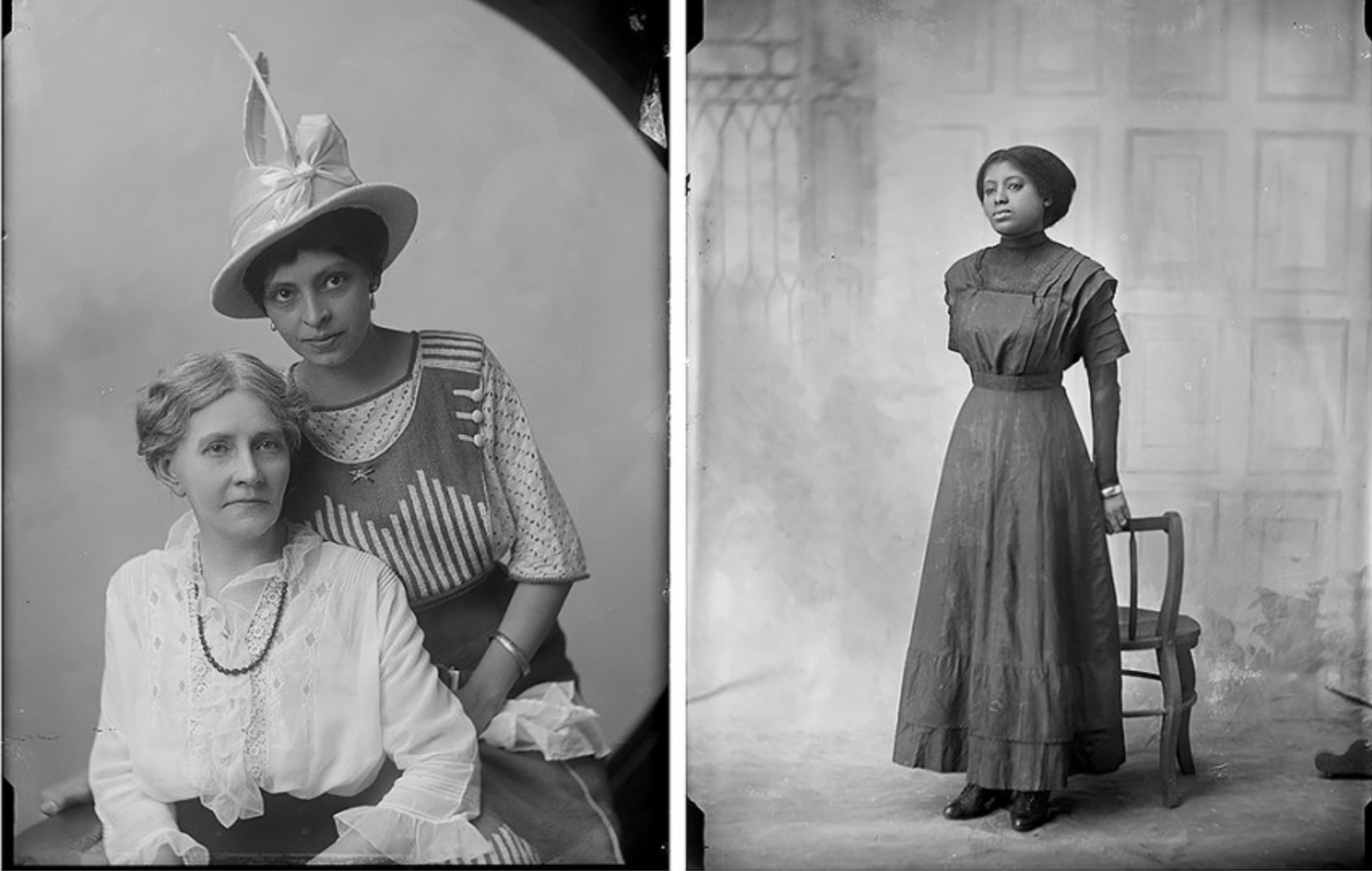In the years following the end of the Civil War, 27,000 formerly enslaved people migrated from the Jim Crow South to Kansas. They called themselves the “Exodusters” and their migration journey came to be known as the “Great Exodus.” Many Exodusters settled and made new lives in Leavenworth, Kansas where the proliferation of photo studios in the 1870s allowed the Exodusters and other Black Americans in the community to create a visual record of their new community. A compelling selection of these photographs are now on view at the Black Archives Museum in St. Joseph, MO.
The studio portraits depict soldiers, couples, baseball teams, and community members of all ages. Sometimes posed with props and sometimes against a painted backdrop, each sitter is gorgeously rendered in black-and-white. These photographs almost didn’t survive the era. As Leavenworth’s photographers retired, their negatives were discarded. In the 1920s, a photographer named Mary Everhard moved to Leavenworth, purchasing photographers’ archives as they shuttered their studios. Over time, she amassed a collection of 40,000 negatives depicting Leavenworth’s early history. In 1967, a collector from Chicago purchased the negatives, selling them off in batches to various museums including the Amon Carter Museum of American Art in Fort Worth, Texas which loaned a portion of its 6,000-photograph collection to the Black Archives Museum for this exhibition.
Photographer’s studios lined Delaware Street in the early days of Leavenworth, Kansas. This enlargement of a negative from the Everhard collection shows the studios of Jay Noble and E.E. Henry.
Alice Davis c. 1870s-1900s by unknown photographer. From the Amon Carter Museum of American Art, Fort Worth, Texas.
H. Hopkins children (left) and Thomas Meadows c. 1890 (right) by unknown photographer. From the Amon Carter Museum of American Art, Fort Worth, Texas.
Kelly Boy in 1893 (left) and William Jordon with a tricycle in 1896 (right) by Horace Stevenson. From the Amon Carter Museum of American Art, Fort Worth, Texas.
Mrs. Johnson in 1897 (left) and Abraham Logan (right) by unknown photographer. From the Amon Carter Museum of American Art, Fort Worth, Texas.
Mrs. Payton and Mother (left) by unknown photographer and Harrison Putney’s portrait of an unidentified woman c. 1910. From the Amon Carter Museum of American Art, Fort Worth, Texas.
Harrison Putney’s portrait of circus performer The Great Layton with his props. From the Amon Carter Museum of American Art, Fort Worth, Texas.
Young Sports Baseball Team c. 1870s-1900s by unknown photographer. From the Amon Carter Museum of American Art, Fort Worth, Texas.
Samuel Green, 1880 (left) by E.E. Henry and Geraldine Jones c. 1870s-1900s (right) by unknown photographer. From the Amon Carter Museum of American Art, Fort Worth, Texas.











